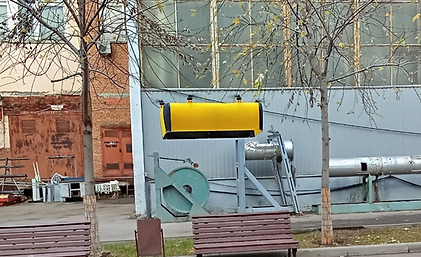LEMFEV
LONG ENDURANCE MARS EXPLORATION FLYING VEHICLE

The Autopilot Teaching Model
Here, we tell the story of our first flight testbed

The autopilot test model, like the basic scaled flying model, is a boxwing vertical takeoff and landing aircraft controlled by differential thrust in all modes. Unlike the base model, the autopilot test model is completely printed from PLA plastic, has a "fuselage" (rack) for attaching electronic components and a battery, and uses commercial 6042 propellers.
The Electronic Components of the Model
The model's equipment includes the following components:
1) Matek H743 Slim V3 Flight Controller
2) TBS CROSSFIRE Nano diversity RX Receiver (868/915)
3) Flowood GOKU GM10 Nano V3 GPS Navigator
4) Three-axis compass (magnetometer) GY-273 (HMC5883) (2 pieces)
5) RUSH BLADE 50A SPORT F4 modes
6) Foxeer Micro Toothless 2 StarLight FPV Camera
7) DarwinFPV 5.8G 40CH 25/200/600/800 MW TX805P VTX Video Transmitter
8) RUSHFPV Cherry antenna (RHCP / LHCP)
9) iFlight XING2 2207 1750 KV 6S motors

The Flight Test Program
Test objectives
- Concept feasibility study
- Tuning and binding the electronic components
- Setting up autopilot operating modes with varying degrees of autonomy up to fully automatic flight along the route
- Exploration of aircraft flight modes, including:
Stall
Transition
- Determination of limit modes for autopilot and other flight restrictions, including crosswind
- Evaluation of the aircraft's flight performance in all modes
- Gaining experience in setting up and piloting aircraft in vertical takeoff and landing without control surfaces
- Development of rapid prototyping techniques
- Specification of the test program, set of instruments and equipment for the scaled model of the Martian aircraft
- Enriching the content of students' practical classes

The autopilot teaching model in its maiden flight, November 9th, 2024